Serenades for Settling
A collaboration between visual artist Stephanie Rothenberg and sound artist Suzanne Thorpe
Created in partnership with the Billion Oyster Project. Funding and support has been provided by the following:
New York State Council on the Arts (NYSCA), Harvestworks Digital Media Arts Center residency, Department of Art and the College of Arts and Sciences and Center for Embodied Autonomy and Robotics (CEAR) at University at Buffalo, Soil Factory, FEED, and proceeds raised by Marina Zurkow and Ira Greenberg.
This project is made possible, in part, with funds from the Media Arts Assistance Fund, a regrant partnership of the New York State Council on the Arts Electronic Media and Film Program and Wave Farm, with the support of Governor Andrew Cuomo and the New York State Legislature.
Version 01 created in collaboration with Professor Karthik Dantu, Director of the Center for Embodied Autonomy and Robotics (CEAR) at University at Buffalo and artist Silvia Ruzanka.
We are currently developing Version 02 with Beautiful Machine.
Exhibition at Harvestworks (Version 01)
Harvestworks Digital Media Arts Center, Sept-Oct 2023, Governors Island, NYC
More info here


Debuting this Fall 2025 (Version 02)
Created through a residency at FEED.art


Underwater Recordings collected at Billion Oyster Field Stations in New York Harbor
Concept Video
Project Description
Serenades for Settling is a speculative operetta focused on the listening body of the heroic oyster. A water filter, sea level mitigator and food source, the oyster is a vital member of our ecosystem that knows habitats for settlement by sensing sound. Specifically, research conducted at North Carolina State University’s Department of Marine, Earth & Atmospheric Sciences found that the bottom-dwelling oyster knows suitable settlement habitats through a distinction of sound signatures in underwater soundscapes. For oysters, sound is a more reliable indicator than chemical exudates or patterns of light. Building on soundscape studies that feature the listening body as an onto-epistemological site, the project leverages data of harbor port movement and local sound to query the dynamic relationships between human activity and the wellbeing of oysters. The project expresses thematic content through an immersive sound, visual and sculpted environment, and by virtual and in-person means, dependent on exhibition and performance opportunities. Through the simulated sense of this sonically navigating being, and participatory and responsive engagement mechanisms, we animate questions such as: how do we listen for safe harbors, and what do they sound like; how do we tend to the more-than-human-world and how does it tend to us? And can the listening oyster guide us to a politics of mutual tending?
The project is being created through aquatic research with the Billion Oyster Project (billionoysterproject.org), a NYC based nonprofit working to ecologically restore the city’s waterways through oyster reseeding/repopulating initiatives. The initial phase of the sound responsive robotic oysters were developed in collaboration with Professor Karthik Dantu, Director of the Center for Embodied Autonomy and Robotics (CEAR)and sound artist Travis Johns. with an earlier version of the system and visuals created by media artist Silvia Ruzanka. and Ben Chang. In 2022 we received a an artist residency with Harvestworks Digital Media Arts Center in NYC. In 2023 the project was awarded a New York State Council on the Arts Award (NYSCA). Additional project technical support and funding is provided by the Department of Art and the College of Arts and Sciences at the University at Buffalo.
In our preliminary project development we have worked with researchers, and resources from the Center for Marine Sciences and Technology at North Carolina State University and the Billion Oyster Project in New York Harbor. We are currently consulting with the Chesapeake Bay Foundation and Doug Myers, Maryland Senior Scientist for the Phillip Merrill Environmental Center, is serving as an advisor. In addition, Stephanie Rothenberg has developed research partners through a Fellowship at Bowdoin College in Brunswick, Maine (2019) where she advanced her inquiry into oyster habitats with access to their marine science facilities and also local oyster nurseries and aquaculture farms (Mook Sea Farms).
Immersive installation design
The design simulates the feeling of being under water. Sculptural components resembling oyster reefs nestle robotic oysters that are at different stages of their lifecycles. The oysters respond to direct and ambient sounds within the space as well as marine traffic data that signals when noisy marine craft is present at certain points within the NY Harbor. For example, a mature adult sized robotic oyster might close its shell when loud sounds are present at specific frequencies. It will open again when the sound recedes, or when the robotic oyster is serenaded. These movements and gestures are based on scientific research that demonstrates that oysters “hear” sound and have distinct responses.
Video projections visualize real time maritime traffic data in New York Harbor and hydrodynamic modeling of water and noise pollution.
The composition for this work is a sonorously speculative oyster habitat that encourages participants to listen, and sense, what oysters hear. It’s created with field recordings from local oyster reefs in NY Harbor as well as dynamic synthesized sounds. The composition features a multichannel generative sound design that is also responsive to maritime traffic data as well as East River weather conditions. This data affects aspects of the composition in realtime to chimerically portray an aquatic environment.
Prototype of sound responsive oyster
Created by UB computer science and robotics students Chetan Palker and Ralfy Chettiar under the guidance of Professor Karthik Dantu. Demonstration at the UB School of Engineering and Applied Sciences end of semester poster sessions in May 2022.
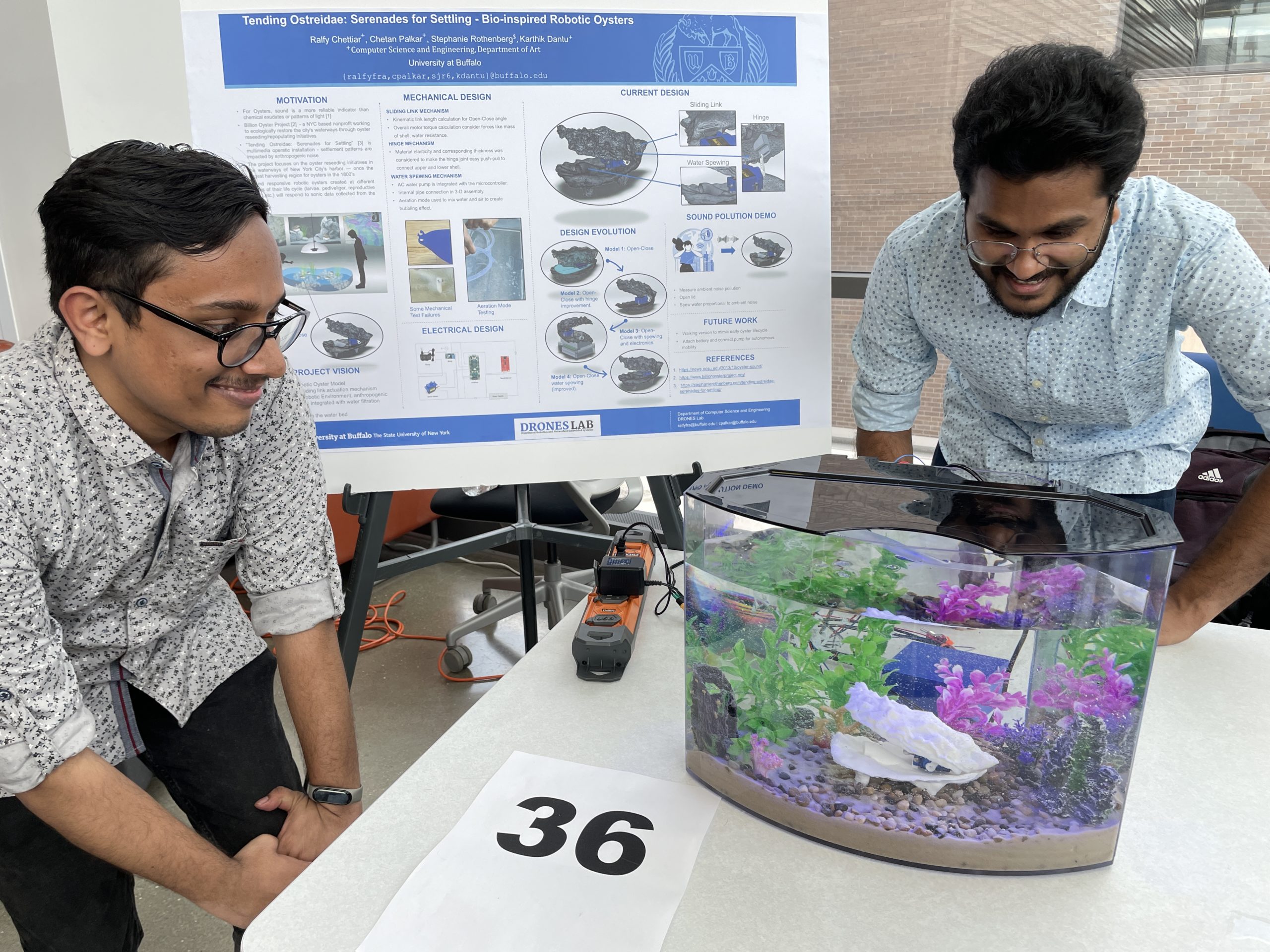
View the poster created from the event here >>
Underwater Sound Recording and marine acoustic ecology research
First round of underwater hydrophone recordings at three of the Billion Oyster Project (BOP) oyster field stations in New York harbor in June 2022. The field stations, Bushwick Inlet, North 7th St pier and East 90th St pier, were selected to reflect different sound qualities based on each location’s maritime traffic and surrounding environment. Big thanks to BOP team Agata Poniatowski, Robina Taliaferrow and Chris.
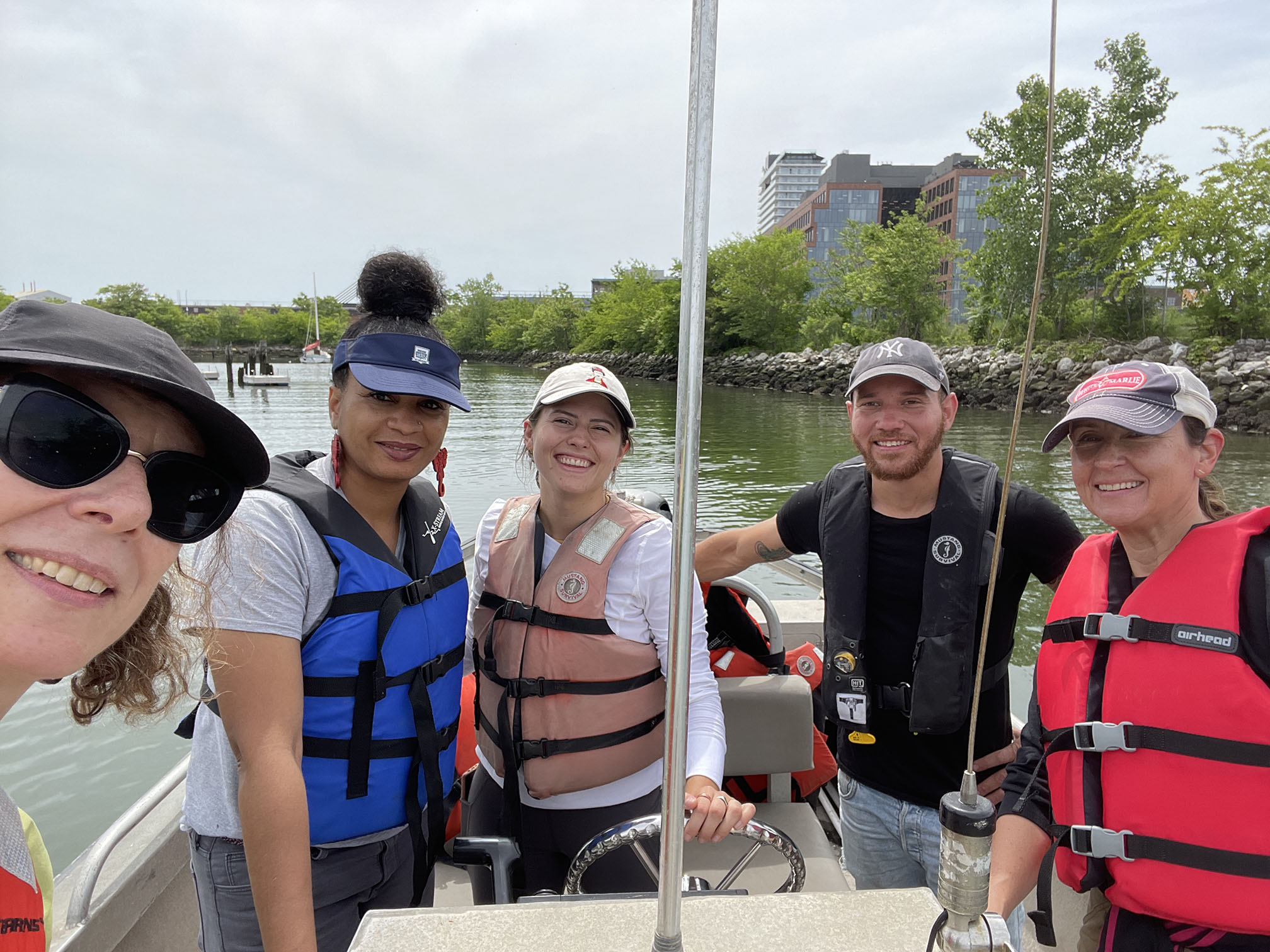
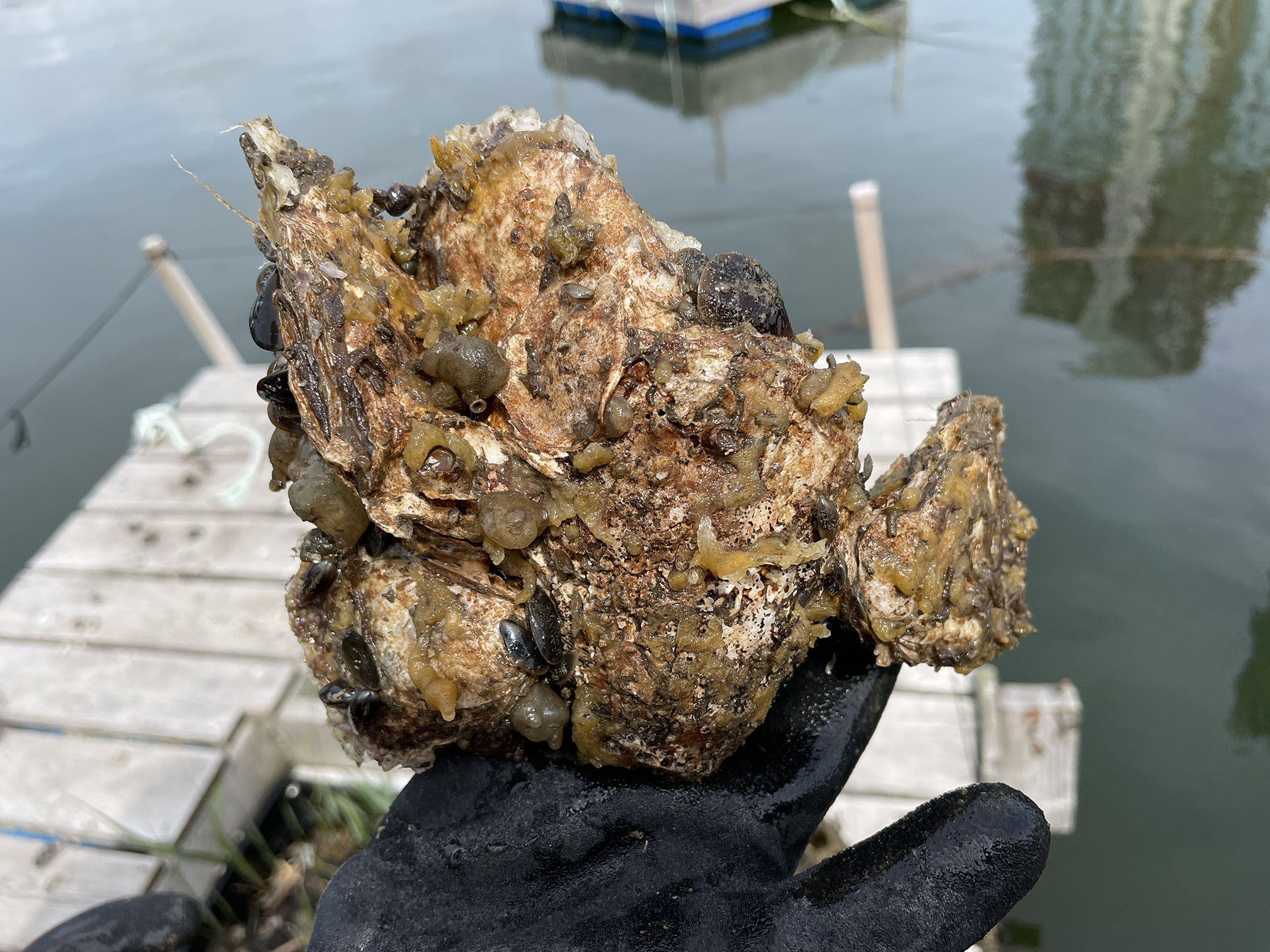
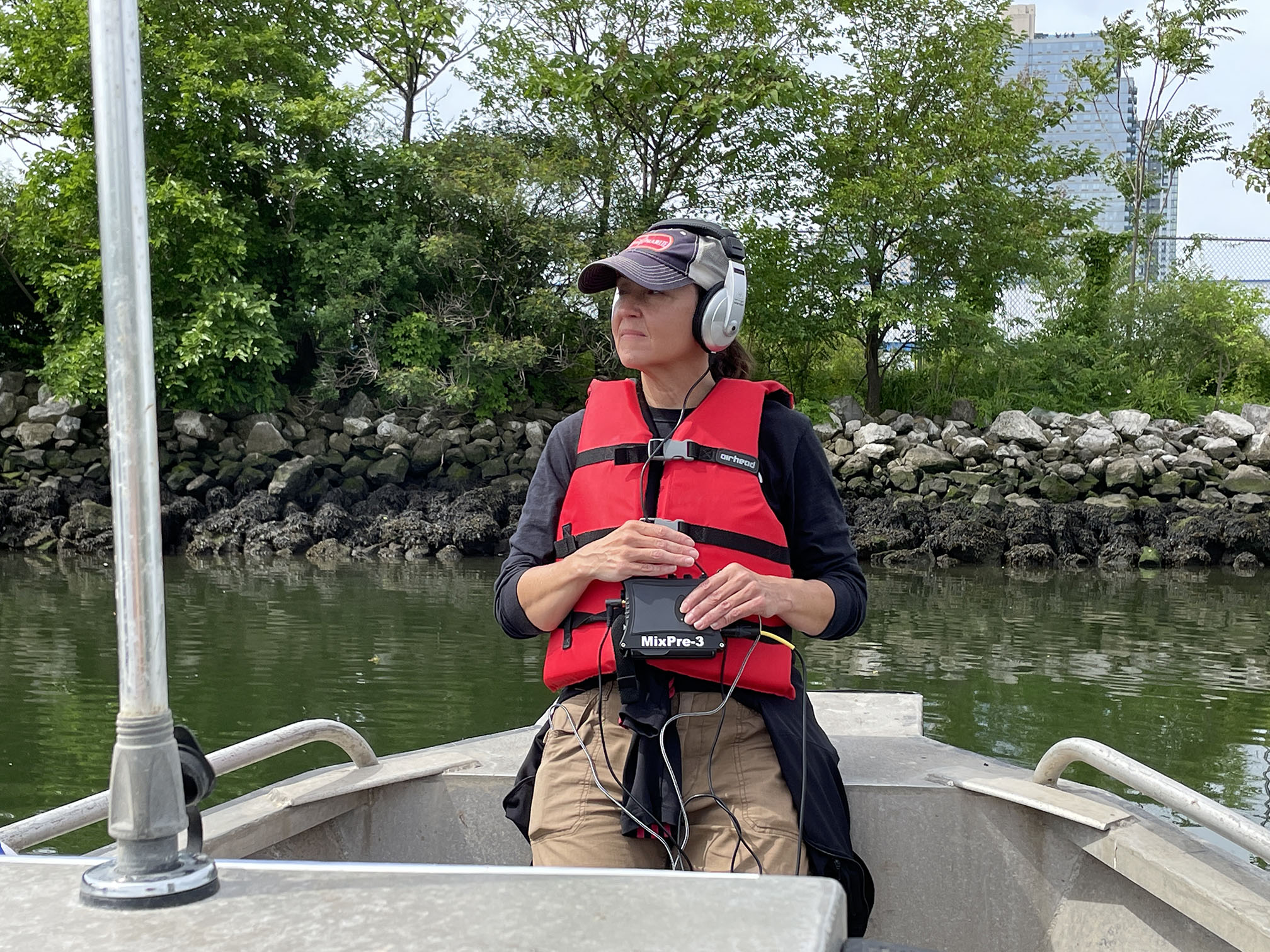


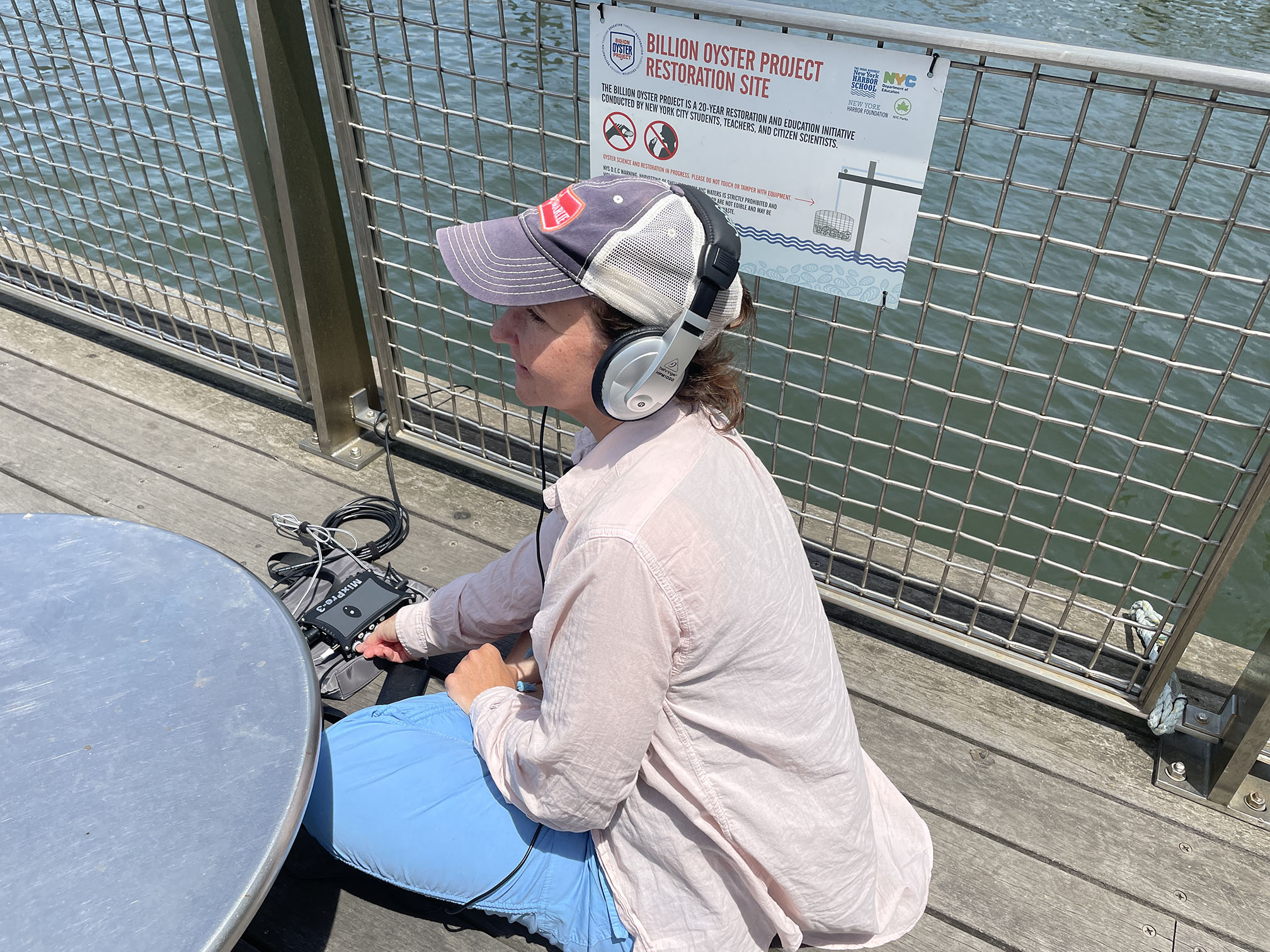

Spectral Analysis
As part of our acoustic research for the project, we recorded underwater sound samples at three Billion Oyster Project Field Stations in New York City’s harbor. With these recordings we were able to familiarize ourselves with the soundscape at each of the sites and reference point for future comparison. We recorded data at sites in the Williamsburg Field Station, including the Bushwick Inlet and North 5th Street Pier, and in Manhattan at the East 90th Street Ferry Terminal. Each station had unique sonic qualities and shared acoustic feature. Following are some sound samples from the sites.
North 5th Street Pier Sample #1, Williamsburg, NY, recorded June 8, 2022 12:29pm
In this sound sample we hear water and waves against the pier and toad fish. Most prominent is the sound of a NYC ferry as it berths at the adjacent pier, where the North Williamsburg ferry terminal is located. The sound of the ferry as it hits wooden pilings at 0:35 in the recording is particularly note worthy.
East 90th Street Ferry Terminal Sample #2, Manhattan, NY, recorded June 8, 2022 4:10pm
In this sound sample we hear a NYC ferry as it departs from the adjacent terminal. Listen for a sudden break in audible intensity as the ferry briefly cuts its engines at 0:03 and 0:28 in the recording. During those breaks we hear water flowing, air bubbles popping and a resonant drone from an unidentified source, which is the sites soundscape baseline.
Bushwick Inlet Sample #4, Williamsburg, NY, recorded June 7, 2022 @ 10:38am
In this sound sample we hear water flowing within the inlet, air bubbles popping, toad fish, and a NYC ferry as it passes by. The ferry was about 2500 feet away from our recording location in the inlet. You can hear the peak of its passing at about 0:25 in the recording. Also audible are waves caused by the ferry passing, and a rope as it rubs against the rocking dock, agitated by waves.
